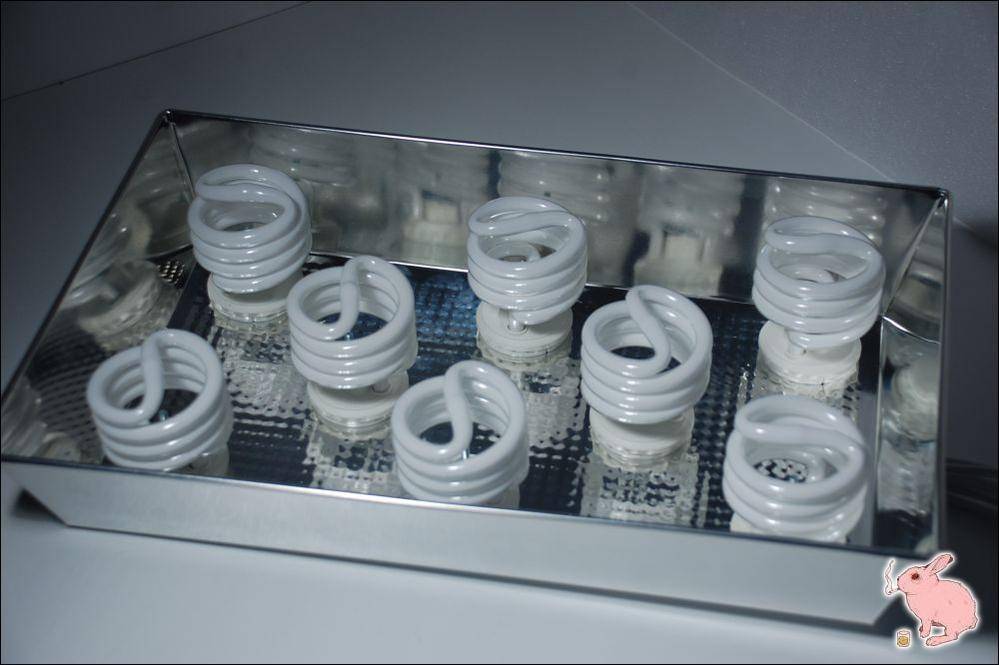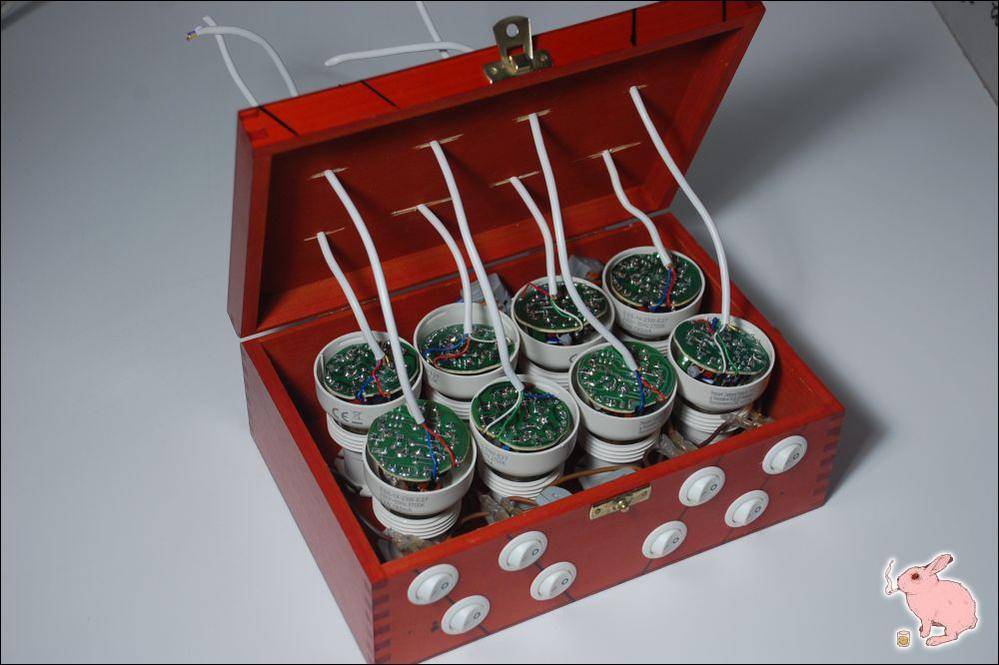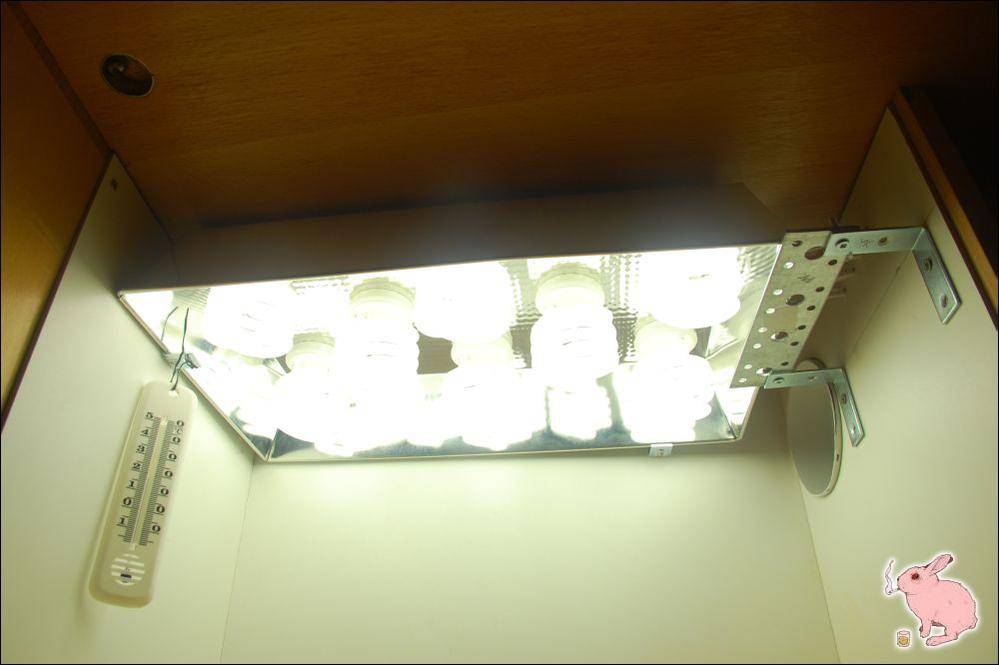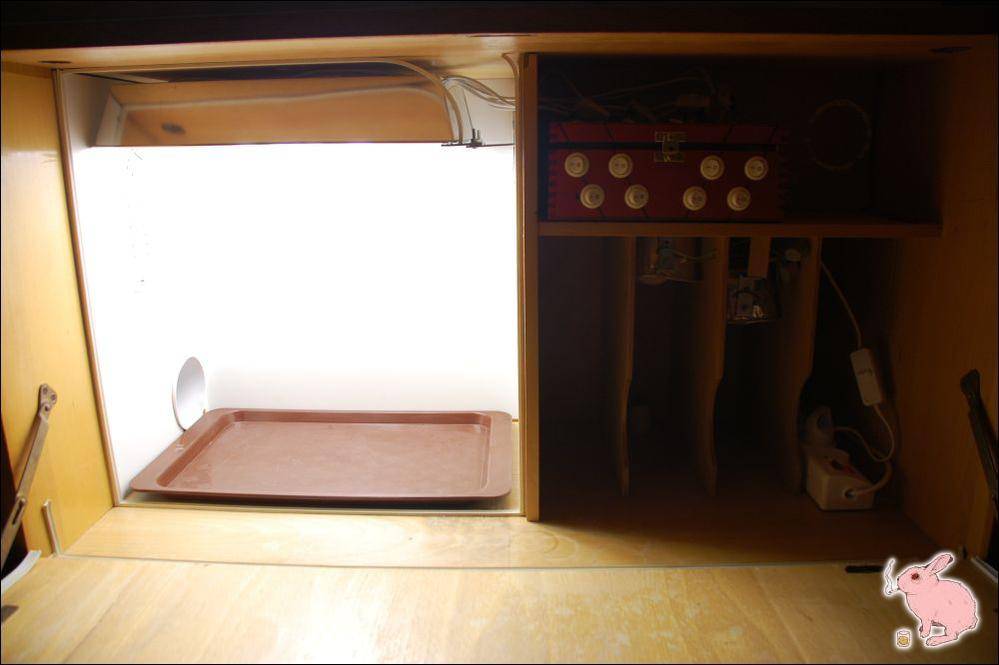hi everyone,
i was requested by other fellow growers to share construction details of a multi-CFL-hood with remote ballast which i built for the rabbit burrow.
let me answer these requests and share something with the ICM community.
DYI guide to your own multi-CFL-hood.
the end product (hood) looks like this:

while the remote ballast looks like this:

and here's the gear in action:


i will cover both contraptions (hood & ballast) one by one for everyone to follow easily.
to start with, let me say big thanks to grouchy, who opened my eyes for this concept and inspired me in his remote ballast thread.
i thought this idea has many advantages and i decided to install it in my rabbit burrow, with some amount of upgrade added to grouchy's original build.
benefits of remote ballasting:
- CFL is cut in half, therefore it only takes 50% of original height (the rest sits in external ballast box), besides you don't need the fixtures in your grow area - this way you can save a lot of space in your cab (especially beneficial for microgrowers)
- CFL ballasts do warm up a bit and due to their external location their heat does not impact cab interior
- if you wish you can add switches which allow lighting control easily. each CFL can be switched on/off in any moment with no fuss
- deinstallation is a piece of cake in case you need to do some maintenance because each element is granted easy access
i was requested by other fellow growers to share construction details of a multi-CFL-hood with remote ballast which i built for the rabbit burrow.
let me answer these requests and share something with the ICM community.
DYI guide to your own multi-CFL-hood.
the end product (hood) looks like this:
while the remote ballast looks like this:
and here's the gear in action:
i will cover both contraptions (hood & ballast) one by one for everyone to follow easily.
to start with, let me say big thanks to grouchy, who opened my eyes for this concept and inspired me in his remote ballast thread.
i thought this idea has many advantages and i decided to install it in my rabbit burrow, with some amount of upgrade added to grouchy's original build.
benefits of remote ballasting:
- CFL is cut in half, therefore it only takes 50% of original height (the rest sits in external ballast box), besides you don't need the fixtures in your grow area - this way you can save a lot of space in your cab (especially beneficial for microgrowers)
- CFL ballasts do warm up a bit and due to their external location their heat does not impact cab interior
- if you wish you can add switches which allow lighting control easily. each CFL can be switched on/off in any moment with no fuss
- deinstallation is a piece of cake in case you need to do some maintenance because each element is granted easy access




